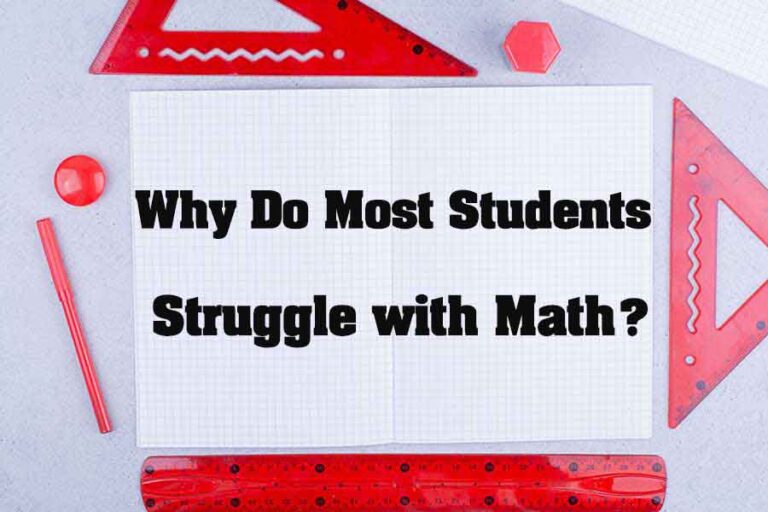Mathematics, often perceived as an esoteric discipline, engenders a plethora of perplexities among students of varying academic backgrounds. The struggle to comprehend mathematical concepts stems from numerous factors, some intrinsic to the nature of mathematics itself, while others arise from pedagogical approaches and individual learning conditions. This discourse aims to elucidate the diverse elements that induce confusion in the study of mathematics, exploring cognitive challenges, instructional methodologies, and emotional factors that collectively hinder students’ understanding.
Cognitive Overload in Abstract Thinking
One of the foremost challenges students encounter in mathematics is the transition from concrete to abstract thinking. In early education, learners deal with tangible arithmetic operations; however, as the curriculum advances to algebra and calculus, the reliance on abstract symbols and concepts becomes paramount. This cognitive overload can manifest as frustration or disengagement, particularly when students grapple with the notion of variables representing indeterminate values or the conceptualization of functions as mappings rather than mere formulas. The abstraction inherent in higher mathematics requires a cognitive shift that many students find daunting, leading to a scarcity of clarity and comprehension.
Numerical Dyslexia and Mathematical Anxieties
Moreover, conditions such as dyscalculia—a learning disability that affects a student’s ability to understand numbers and perform mathematical calculations—exacerbate the difficulties faced by some learners. Individuals with this condition may struggle to comprehend numerical symbols, leading to significant confusion even in simple mathematical tasks. Alongside this, the prevalence of mathematical anxiety cannot be underestimated. The psychological impact of anxiety often manifests in cold sweats during exams or intense fear of failure, which can hinder performance and exacerbate misunderstandings. The psychological barrier created by anxiety inhibits students from approaching mathematical challenges with clarity and confidence.
Misconceptions and Fundamental Errors
Students frequently develop misconceptions related to foundational principles, a phenomenon that can create a cascading effect of confusion throughout their mathematical education. For instance, a lack of understanding regarding the order of operations can lead to significant errors in more complex problems. Such misconceptions are often not addressed in traditional teaching methods, as instructors may assume a level of understanding that has not been attained. Reinforcing foundational knowledge and ensuring students grasp fundamental concepts are essential in preventing the entrenchment of inaccuracies that perpetuate further misunderstanding.
Pacing and Differentiation in Instruction
The instructional pace also plays a crucial role in students’ comprehension of mathematical concepts. A curriculum that moves too quickly may leave students grappling with inadequately understood material, creating compounding confusion as they progress to advanced topics. Conversely, a slower-paced curriculum may not challenge quicker learners, leading to apathy and disengagement. Differentiated instruction is essential in addressing these disparities; however, it requires skillful adaptation by educators to meet the diverse needs of students, a feat that is often difficult to achieve in traditional classroom settings.
The Role of Technology and Resources
In an increasingly digital world, technology plays a dual role in mathematics education. On one hand, educational technologies provide access to a wealth of resources, offering interactive tools and personalized learning experiences. On the other hand, an overreliance on calculators and software can engender a surface-level understanding of mathematical concepts, where students may lose sight of underlying principles behind computational tasks. The challenge resides in finding a balanced approach that leverages technology to enhance learning while ensuring that students develop robust problem-solving skills and a deep comprehension of mathematical logic.
Language Barriers in Mathematics
Mathematics is often described as a universal language; however, the linguistic components involved in understanding mathematical problems can pose barriers, especially for non-native speakers. The specific terminology and nuances embedded in word problems can perplex students who struggle with language comprehension. Misinterpretation of key phrases can lead to miscalculations or inappropriate approaches to problems, emphasizing the necessity for educators to incorporate language support and contextual understanding in their instruction.
Peer Influence and Collaborative Learning
The dynamics of peer influence also significantly impact students’ mathematical learning experiences. Collaborative learning environments can foster a rich exchange of ideas and beneficial discussions but are not without their challenges. Students may feel intimidated by peers who grasp concepts more readily, leading to self-doubt and a diminished willingness to participate or ask questions. Conversely, positive peer interactions can bolster confidence and facilitate deeper understanding. Instructors play a pivotal role in navigating these dynamics, encouraging a culture of collaboration that emphasizes mutual support and intellectual curiosity.
Conclusion
In summation, the challenges that students face in understanding mathematics are multifaceted, stemming from cognitive, emotional, and pedagogical factors. Addressing the confusion surrounding mathematics requires a holistic approach that includes strengthening foundational knowledge, personalizing instruction, and fostering a positive emotional atmosphere conducive to learning. Recognizing and mitigating misconceptions, pacing issues, and language barriers will provide a more equitable and effective mathematical education, ultimately empowering students to cultivate both understanding and appreciation for the subject. By addressing these myriad factors, educators can nurture a generation of learners who are not only competent in mathematical skills but also confident in their ability to engage with this vital discipline.












